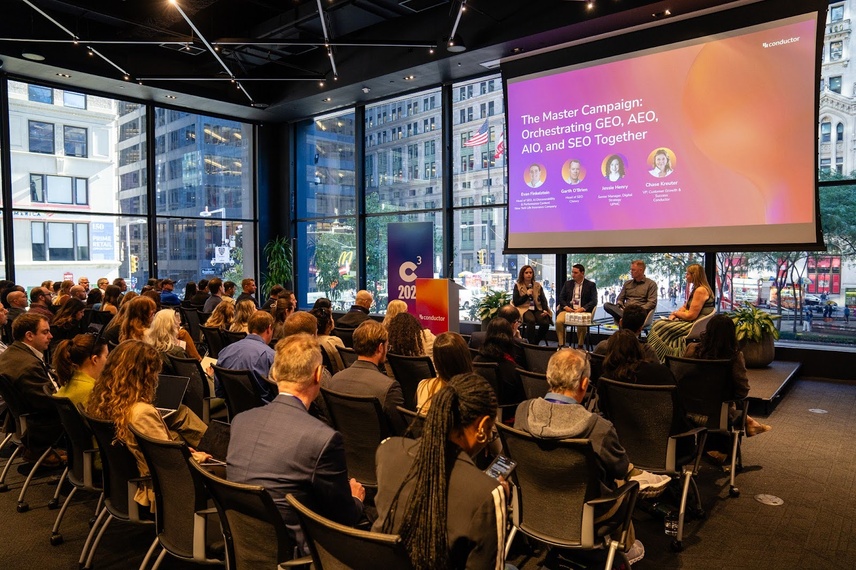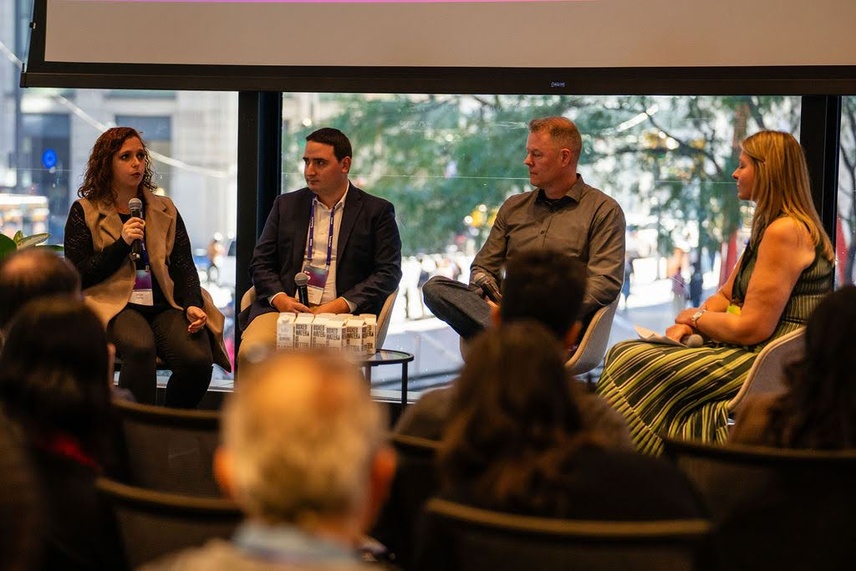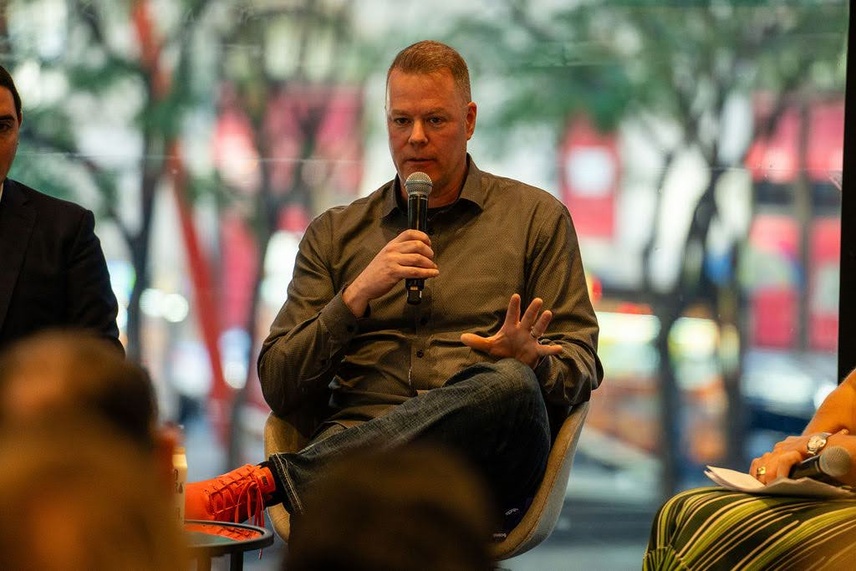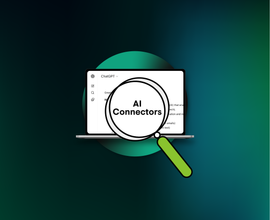How to Unify AEO, GEO, and SEO Search Strategies
Stop optimizing for platforms. Start optimizing for people. The brands winning in today's fragmented search landscape aren't building separate strategies for AEO, GEO, and SEO—they're unifying their approach around user behavior. This requires practical shifts: building omnichannel content ecosystems, tracking citations instead of just clicks, and leveraging SEO fundamentals that work across every platform. If you're still treating AI search as just another channel to conquer, it's time to reframe the problem entirely.
Marketers are drowning in acronyms—AEO, GEO, and SEO—but their customers are just looking for answers. Whether someone asks Google, ChatGPT, or Perplexity, they're solving the same fundamental need: discoverability.
These insights are from a panel at C3 2025, New York's premier AEO / GEO conference, brought to you by Conductor, featuring marketing leaders who've stopped treating each search platform as a separate battleground:
- Evan Finkelstein, Head of SEO, AI Discoverability, & Performance Content at New York Life Insurance Company
- Garth O'Brien, Global Head & Director of SEO at Chewy
- Jessie Henry, Sr. Manager, Digital Strategy at UPMC
- Chase Kreuter, VP of Customer Growth & Success at Conductor
The challenge isn't learning to optimize for yet another platform. It's recognizing that users don't distinguish between search engines, so your strategy shouldn't either. The organizations breaking through this noise have identified five critical shifts:
- Reframe around user behavior, not platforms: AI isn't just another SERP feature—it's fundamentally changing how people find and use information throughout their day.
- Build content ecosystems, not isolated posts: Substantial cornerstone pieces supported by complementary assets across channels outperform platform-specific content every time.
- Expand your metrics beyond clicks: Bot crawl frequency, citation tracking, sentiment analysis, and impression-to-engagement ratios now matter as much as conversions.
- Deploy strategic, industry-specific schema: Generic article markup is insufficient—AI systems need deep structured data to understand context.
- Apply SEO fundamentals everywhere: The skills that made SEO professionals successful translate directly to AI search because the core job hasn't changed.

Reframe around user behavior, not platforms
For years, digital marketers have approached each search platform as its own distinct challenge—building separate teams, strategies, and measurements for each new acronym that emerged. But users weren't making those distinctions. They just wanted answers, whether from Google, ChatGPT, or Perplexity.
The distinction between platforms started to crumble when the data told a different story. AI wasn't behaving like previous SERP features, and users weren't treating it that way either:
It almost feels like AIOs came out and were featured snippets 2.0, but then you look at how everybody's using AI. It's not just for marketing or SEO, but how it's integrating into people's lives and the way that they interact with the internet. It's an evolution of behavior.
AI isn't changing what search results look like. It's changing how people find and use information throughout their day. That behavioral shift is what requires a unified strategy.
For organizations ready to break down these silos, the strategic shift starts with how you frameFrame
Frames can be laid down in HTML code to create clear structures for a website’s content.
Learn more the problem:
Stop asking: "How do we optimize for ChatGPT versus Google?"
Start asking: "What content do users need, regardless of where they search?"
This reframe changes everything that follows. If your teams are fragmented across platforms, your content strategy probably is too. The path forward requires:
- Track bot activity from AI platforms to understand the relationship between optimization efforts and crawl frequency
- Validate strategy with cross-channel data—search trends and social listening often reveal the same user questions appearing across different channels
- Align teams around user intent rather than platform specialization
The brands that figure this out first aren't adding AI search to their existing playbook; they're rewriting the playbook around user behavior.

Build content ecosystems, not isolated posts
The question isn't whether to create separate content for each platform—it's how to build smarter content that scales across all of them. You can't sustain platform-specific strategies indefinitely, and users expect consistency regardless of where they find you.
The solution lies in "big rock content"—substantial cornerstone pieces that serve as destinations, supported by an ecosystem of complementary assets across channels. This approach gets validated when you compare search data with social listening: people ask the same questions across both channels.
When comprehensive content is created around specific topics and distributed strategically, it earns citations across multiple formats and platforms.
It just really reiterates the need for your content to be omnipresent. It's not OK to just have a blog post anymore.
For teams ready to build unified content strategies, the shift requires moving away from isolated posts toward interconnected content ecosystems:
- Build cornerstone content, then create supporting pieces—blog posts, social content, FAQs—that work together across channels
- Think in content ecosystems, not isolated platform-specific posts
- Distribute strategically across channels—ensure your content appears where your audience is searching, whether that's Google, ChatGPT, or social platforms
The payoff is content that works harder across every platform, not separate assets that only perform in one place. When you build comprehensive resources and support them with complementary content, you create multiple entry points for discovery while maintaining a consistent authoritative voice—regardless of where users find you first.
Expand your metrics beyond clicks
Unified strategies require unified measurement. But what does that actually look like when the metrics you've relied on for years start shifting?
The hardest part isn't adding new metrics—it's getting organizational buy-in when traditional KPIs decline. When traffic drops but impressions and AI activity climb, the natural instinct is to find what's broken. The smarter approach is to ask whether user behavior has fundamentally changed.
Leadership teams that embrace this shift open the door to measuring what actually matters in an AI-influenced search landscape. This mindset change allows teams to move beyond defending declining traffic numbers and start tracking the signals that predict future performance:
When we saw traffic going down, impressions going up, AI activity going up, instead of [leadership] figuring out blame, they actually asked, 'Is this a new behavior?” And so after doing research... they're ready to embrace. There's going to be new metrics that we need to pay attention [to] when it comes to organic or AI search referral traffic.
Moving from "What's broken?" to "What's changing?" unlocks the ability to measure what actually matters.

Metrics that matter now: The new performance indicators
Conversions still matter—they're just not the complete picture anymore. You need visibility into how AI systems perceive and represent your brand. Tracking authority, interest, and sentiment from LLM outputs gives you leading indicators that traditional metrics can't provide. By the time poor AI representation affects conversions, you've already lost opportunities.
The disappearing clicks aren't a crisis—they're a filter. Low-value awareness traffic is vanishing, which means the users who do visit your site are further along in their journey:
I think that clicks are a little bit dead. You can't really measure performance like you used to because a lot of that awareness click activity that wasn't very valuable is gone now. So it's actually tightened your visibility to the more qualified experience and engagements.
So what should organizations actually track? Shift your focus to these new signals…
- Bot crawl frequency from ChatGPT, Perplexity, and other AI platforms—increasing activity signals content resonance
- Citation tracking—monitor where and how your brand appears in AI responses, including context and accuracy
- Sentiment analysis from LLM outputs—understand whether AI represents your brand positively, neutrally, or negatively
- Impression-to-engagement ratios—measure how visibility translates to meaningful interactions, not just page views
…without abandoning the ones that drive business impact:
- Revenue, conversions, and qualified lead generation—AI visibility means nothing without business impact
- Page one keyword rankings—they directly correlate with LLM citations and AI Overview appearances
While low-value awareness clicks may be on their way out, what's left is higher-intent engagement. Track the new signals that show AI visibility, but measure success by what actually drives your business forward.
Deploy strategic, industry-specific schema
The era of implementing schema markup just to check a box is over. AI systems need deep, contextual structured dataStructured Data
Structured data is the term used to describe schema markup on websites. With the help of this code, search engines can understand the content of URLs more easily, resulting in enhanced results in the search engine results page known as rich results. Typical examples of this are ratings, events and much more. The Conductor glossary below contains everything you need to know about structured data.
Learn more to understand what your content truly represents—and generic article markup alone won't earn you citations in AI-powered search.
Strategic, industry-specific structured data is what determines whether AI systems can confidently cite your content or skip over it entirely:
It's going to be really important that you continue to not just have schema markup for the sake of having schema markup, but having really intelligent strategic types of structured markup. I don't think that having just article markup is sufficient.
The structured data requirements vary dramatically depending on your industry and content type. What provides value for healthcare content differs entirely from what eCommerce or financial services sites need.
The key is intentionality—every piece of structured data should serve a specific purpose: helping AI systems understand your domain authority, content context, and why you're the right source to cite.
This means moving beyond generic article markup to implement schemas that reflect the depth and complexity of your actual content. However, the specific types matter less than the strategic thinking behind them: Are you giving AI systems the context they need to understand your expertise?
Strategic schema goes beyond simply adding markup to your pages. It requires thoughtful implementation that scales across your content:
- Map schema to your content structure so every major content type has appropriate structured data that reflects its purpose and value.
- Layer multiple schema types when relevant to provide complete context—a single piece of content might benefit from combining several schema types.
- Keep schema current as your content evolves, because outdated or inaccurate structured data damages your authority with AI systems.
- Validate regularly to catch issues before they confuse AI crawlers and reduce your citation likelihood.
When done right, schema transforms your content from discoverable to citable.
Apply SEO fundamentals everywhere
The myths about unified search strategies are everywhere. The biggest misconception? That keywords no longer matter in an AI-powered world.
The truth is more nuanced. KeywordKeyword
A keyword is what users write into a search engine when they want to find something specific.
Learn more tracking remains critical to understanding performance—it's just not the endpoint anymore. If you rank on page one of Google for a target keyword, you're significantly more likely to be cited in LLMs and AI Overviews. The strategy is still valuable; it simply extends beyond traditional search:
I want to bust that tracking keywords is no longer critical to your strategy…You can still get a lot of really great directional insight from tracking keywords. If you are on page one of Google for a keyword that you're targeting, you're more likely to be cited in LLMs and AI overviews. So that strategy is still really critical, but it doesn't stop there.
If keywords still matter, what about SEO itself? The "SEO is dead" narrative has resurfaced with every major algorithm shift for over a decade—and it's wrong again.
The reality is that enterprise SEO professionals are uniquely positioned to navigate this transition. The core tactics that drove traditional SEO success—creating quality content, structuring information clearly, and building authority—still work for AI search. It's the same optimization discipline applied to a new platform:
The myth that SEO is dead is worth busting…SEOs are uniquely positioned to help carry the [organization] through this new transition.
A lot of the core SEO tactics—they're still working for AIO. The core fundamentals are the same; it's just a new platform. It's AI search, it's still optimizable, it's still something that we can use our skills to win.
The skills matter because the fundamental job hasn't changed. SEO professionals excel at working with ambiguity, collaborating across teams, and interpreting imperfect data—exactly what organizations need right now.
Regardless of the platform, the core responsibility is identical: educating search systems about what your content represents and why it matters.
To build upon that, we're educators. We're educating the engines, whether it's AI or Google or Bing, [on] what an image asset is, what a video is, what the subject matter target of the page is. It's the same for AI search right now…
SEO is not dead; it never has been dead, and at least for the time being, it's still alive.
The technology changes, but the fundamentals don't. Quality content, clear signals, strategic implementation—that's what works across every platform.
In summary
Unifying search strategies requires real organizational change. You can't bolt AI optimization onto existing silos and expect it to work.
Success starts with a fundamental shift in perspective. Stop asking "How do we optimize for this platform?" and start asking "What do our users need, regardless of where they're searching?" That reframe is what orchestrating AEO, GEO, and SEO together actually means—and it changes everything about how you build content, measure performance, and align teams.
Here's what's not changing: the core discipline of helping search systems understand quality content. Whether you're optimizing for Google or ChatGPT, you're still educating engines about what your content is and why it matters. SEO skills translate directly to AI search because the fundamental job is the same.
The organizations figuring this out aren't waiting for best practices to emerge. They're testing, measuring what works, and adjusting in real time. That's the playbook.
Evan Finkelstein, Garth O'Brien, Jessie Henry, and Chase Kreuter shared these insights and more during their C3 2025 session, The Master Campaign: Orchestrating GEO, AEO, AIO, and SEO Together—watch the full recording below.
This article is based on insights shared at C3—New York’s premiere AEO / GEO conference—brought to you by Conductor, and has been adapted for clarity and depth.

![Evan Finkelstein, Head of SEO, AI Discoverability, & Performance Content, [object Object]](https://cdn.sanity.io/images/tkl0o0xu/production/c184b174c5a1447474ece6e7bd803ba7213f7626-3648x5472.jpg?fit=min&w=100&h=100&dpr=1&q=95)
![Jessie Henry, Senior Manager, Digital Strategy, [object Object]](https://cdn.sanity.io/images/tkl0o0xu/production/5d57c189d1819a5555d9799ced7594be8fd83379-3667x5017.jpg?fit=min&w=100&h=100&dpr=1&q=95)
![Garth O'Brien, Global Head & Director of SEO, [object Object]](https://cdn.sanity.io/images/tkl0o0xu/production/68b4596cc301090214a3f1fba899dbb19dde6682-450x450.jpg?fit=min&w=100&h=100&dpr=1&q=95)






